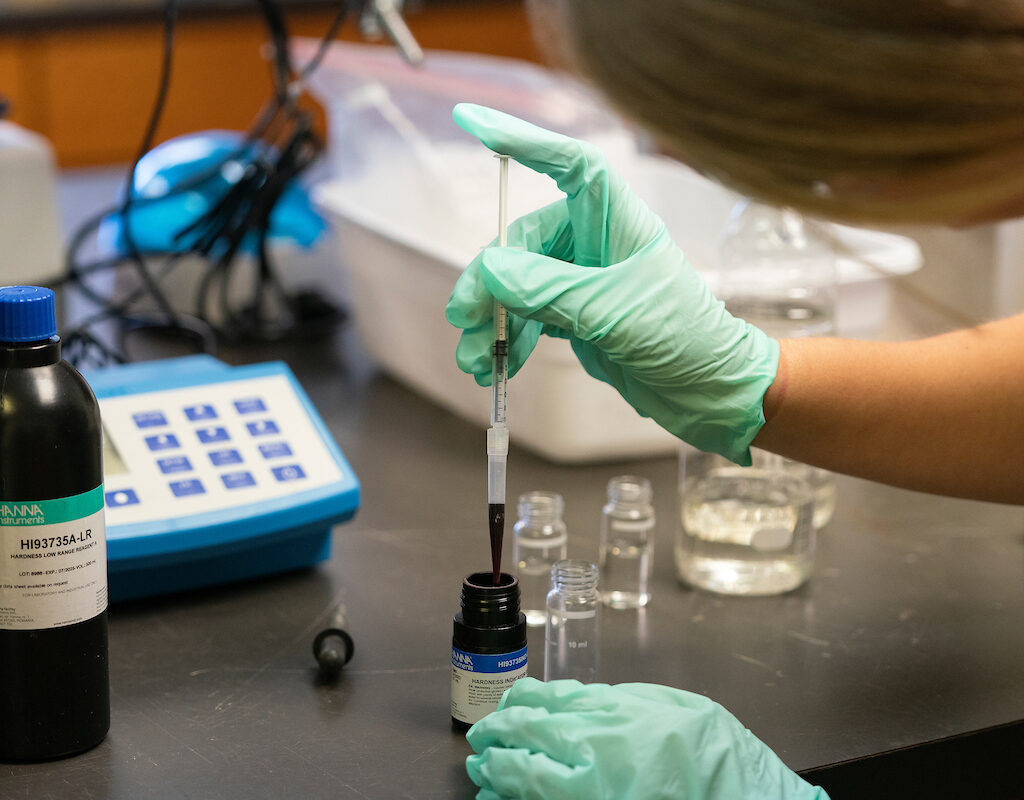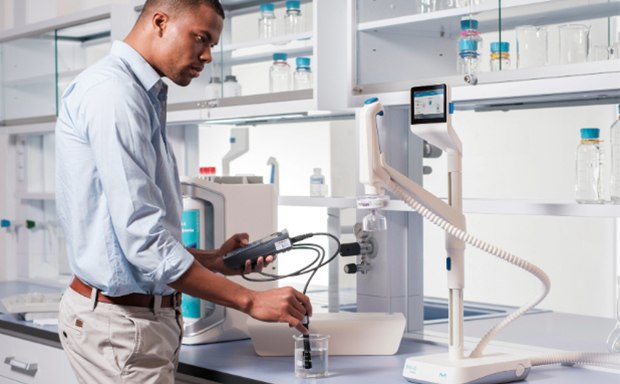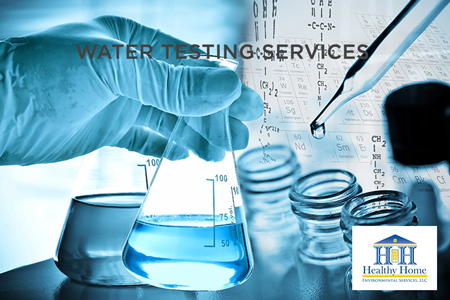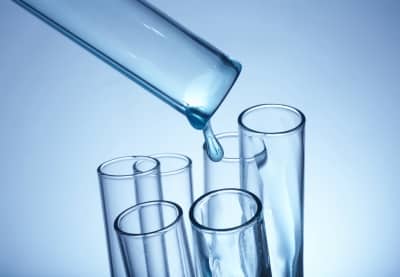Discover Reliable Well Water Testing Services for Your Assurance
Discover Reliable Well Water Testing Services for Your Assurance
Blog Article
Discover What Is Included in Water Evaluating and Just How It Ensures Safe Drinking Water
Recognizing the ins and outs of water screening is pivotal in guaranteeing the high quality and safety and security of our drinking water. Via a careful examination of physical, chemical, and microbiological elements, water testing identifies prospective impurities that could present wellness dangers.
Key Components of Water Screening
Water screening is a critical procedure that includes a number of vital elements to guarantee the security and quality of alcohol consumption water. In addition, ensuring the pH balance of water is crucial, as it influences the water's corrosiveness and the efficacy of disinfection processes.
One more considerable component involves microbiological evaluation, where water samples are checked out for the visibility of microorganisms such as germs, infections, and protozoa. If taken in, this analysis is essential to identify organic hazards that could position health and wellness risks. Additionally, chemical analyses are performed to identify not natural and natural substances, such as hefty steels, nitrates, and pesticides, that may be present in the water supply.

Identifying Unsafe Impurities
Discovering hazardous contaminants in drinking water is an essential facet of protecting public health. This process involves determining potential risks that can endanger the quality and safety of water supplies. Contaminants can vary from microbes such as bacteria, infections, and protozoa, to not natural compounds like lead, arsenic, and nitrates, in addition to organic pollutants including chemicals and commercial chemicals. Each sort of pollutant poses distinctive health and wellness dangers, making their detection critical to ensure the water eaten by the public is safe.
Water screening for pollutants is typically conducted by regulatory firms and water energies, using a mix of area sampling and laboratory analysis. These analyses are made to discover both naturally occurring compounds and anthropogenic contaminants that may have entered the water system through farming overflow, industrial discharge, or aging framework. Normal tracking is necessary, as contamination degrees can vary due to ecological adjustments, seasonal variants, or human activities.
The recognition of unsafe pollutants notifies required actions, such as water therapy interventions or public advisories, to alleviate dangers. Early detection is vital to stop negative health and wellness impacts, varying from stomach illnesses to lasting conditions like cancer, therefore making certain the proceeded security of drinking water.

Chemical Evaluation Methods
In the world of guaranteeing risk-free alcohol consumption water, chemical analysis methods play a crucial role in identifying and evaluating impurities. These methods are vital for identifying a wide variety of chemical materials, including heavy steels, pesticides, and industrial contaminants, which can posture substantial health and wellness threats.
Gas chromatography-mass spectrometry (GC-MS) is another crucial method, specifically for natural substances. It divides complex blends and recognizes semi-volatile and volatile organic substances, guaranteeing that toxins like benzene and toluene are within secure limits. High-performance liquid chromatography (HPLC) is similarly utilized for non-volatile substances, consisting of particular chemicals and pharmaceuticals.
Ion chromatography is employed to determine focus of cations and anions, such as nitrates and sulfates, which are crucial in analyzing water high quality. These chemical analysis techniques jointly make sure that drinking water remains safe by discovering discrepancies from established purity standards, consequently guarding public wellness. Making certain accuracy and precision in these examinations dig this is vital to keeping the honesty of water safety evaluations.
Microbiological Checking Techniques
Exact microbiological testing is essential for safeguarding public health and wellness by making sure that alcohol consumption water is without damaging microorganisms. This process entails finding and mentioning microorganisms such as bacteria, infections, and protozoa that may contaminate water products. Usual microorganisms include Escherichia coli, Giardia, and Cryptosporidium, each posturing considerable health and wellness risks.
Numerous approaches are used in microbiological screening to recognize these dangers. The membrane filtration strategy is often used, involving water going through a filter that captures bacteria, which are then cultured to determine their visibility and concentration. The multiple-tube fermentation method allows the metrology of coliform bacteria utilizing a series of dilution and incubation steps.
Developments in modern technology have presented molecular strategies such as polymerase domino effect (PCR), which allows for the very certain and quick detection of virus by magnifying their hereditary material. Enzyme-linked immunosorbent assays (ELISA) also Continued provide a technique to detect microorganisms by recognizing details proteins or antigens.
These varied techniques are crucial for detailed water high quality analysis, guaranteeing that water treatment procedures are efficient and that circulation systems preserve safety and security. By utilizing these microbiological testing approaches, potential carcinogen can be identified and reduced quickly.

Value for Public Health
Ensuring the microbiological safety and security of alcohol consumption water directly influences public health and wellness by avoiding the spread of waterborne diseases. Virus such as germs, infections, and protozoa can cause diseases like cholera, dysentery, and gastrointestinal infections (Well water testing services). The execution of detailed water testing methods is vital in identifying and mitigating these dangers, thus safeguarding areas from prospective outbreaks
Normal water testing not just finds microbial pollutants but additionally evaluates chemical and physical parameters that can affect wellness. For example, excessive degrees of nitrates or heavy steels such as lead can position serious wellness dangers, particularly to prone populations like babies and pregnant females. By determining these dangers early, water testing click for more info enables prompt interventions, ensuring the water system remains within risk-free consumption requirements.
In addition, water testing plays a vital role in preserving public self-confidence in municipal water systems. It gives transparency and accountability, assuring the general public that their health is a concern. For plan manufacturers and health officials, the data originated from water testing educates decisions on facilities financial investments and public health and wellness approaches, guaranteeing sources are directed where they are most needed. In this method, water screening is indispensable in promoting a much healthier, more secure society.
Final Thought
Water screening functions as a crucial device for making certain the safety and quality of alcohol consumption water with thorough analysis of its physical, chemical, and microbiological buildings. By identifying damaging contaminants, such as heavy steels and chemicals, and using sophisticated methods like chromatography and spectrometry, water testing promotes the recognition of possible health and wellness risks. The application of extensive testing protocols is important for keeping compliance with safety requirements, eventually safeguarding public wellness and enhancing self-confidence in community water systems.

By recognizing these dangers early, water testing makes it possible for timely interventions, ensuring the water supply continues to be within safe intake standards.
Water testing serves as a necessary mechanism for making sure the safety and security and high quality of alcohol consumption water through thorough assessment of its physical, chemical, and microbiological residential properties.
Report this page